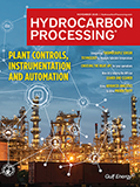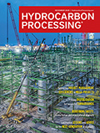CO2 emissions reduction via a pinch study in a vacuum distillation unit
The project detailed here was carried out on a vacuum distillation unit (VDU) in the TÜPRAŞ İzmir refinery.
IP: 10.1.103.123
This is a preview of our premium content. Thank you for your interest—please
log in or
subscribe to read the full article.
The Authors
Dınçer, A. R. - TÜPRAŞ İzmir Refinery, Izmir, Turkey
Asli Reyhan Dınçer is the Simulation Section Leader at TÜPRAŞ headquarters within the process and equipment development department. She previously worked as a process engineer for Foster Wheeler, and has 13 yr of experience in the oil and gas industry. She holds a BSc degree in chemical engineering from Yıldız Technical University and an MBA from Koç University. The author can be reached at Asli.Reyhan@Tüpraş.com.tr
Özsağiroğlu, E. - TÜPRAŞ İzmir Refinery, Izmir, Turkey
Erhan Özsağiroğlu is a Simulation Superintendent Engineer at TÜPRAŞ headquarters within the process and equipment development department. He previously worked as a Senior Process Engineer and holds a PhD in chemical engineering from Istanbul Technical University. The author can be reached at Erhan.Ozsagiroglu@Tüpraş.com.tr
Iseri, F. - TÜPRAŞ İzmir Refinery, Izmir, Turkey
Funda Iseri works as a Production Planning Superintendent at the TÜPRAŞ Izmir Refinery. She began working in crude oil and vacuum distillation plants as an Operation Engineer for TÜPRAŞ in 2011, and has assumed team member and leadership roles in several process engineering projects, including promotions to Chief Engineer and Superintendent positions. Ms. Iseri earned a BSc degree in chemical engineering from Middle East Technical University (METU) and an MSc degree in energy management from Technical University of Berlin. The author can be reached at funda.iseri@Tüpraş.com.tr
Dogan, G. - TÜPRAŞ İzmir Refinery, Izmir, Turkey
Gizem Dogan is Process Superintendent at the TÜPRAŞ Izmir Refinery responsible for lube oil units. She previously worked as a Chief Process Engineer responsible for crude and vacuum distillation units. She began working as an OHS Engineer for TÜPRAŞ in 2014. Ms. Dogan earned a BSc degree in chemical engineering from Middle East Technical University. The author can be reached at Gizem.Dogan@Tüpraş.com.tr
Yavuz, G. D. - TÜPRAŞ İzmir Refinery, Izmir, Turkey
Gözde Dönmez Yavuz is Process Superintendent at TÜPRAŞ headquarters within the process and equipment development department. Before this position, she worked as a Process Engineer for 6 yr and was responsible for hydroprocessing units before moving to Simulation Superintendent. She holds a BS degree in chemical engineering from Middle East Technical University and an MS degree in fuel and energy technologies from Boğaziçi University in İstanbul, Turkey. The author can be reached at Gozde.Donmez@Tüpraş.com.tr
Andaş, G. Ş. - TÜPRAŞ İzmir Refinery, Izmir, Turkey
Gülşen Şahın Andaş is Process Superintendent at the TÜPRAŞ İzmir Refinery. She previously worked in the energy management department and is now responsible for CDU/VDU/SRU/ARU process units. She holds a BSc degree in chemical engineering and an MSc degree in engineering management. The author can be reached at Gulsen.Sahin@Tüpraş.com.tr
Aka, O. - TÜPRAŞ İzmir Refinery, Izmir, Turkey
Onur Aka is Process Superintendent at TÜPRAŞ headquarters, where he has held multiple positions in process and operations functions for 15 yr. Mr. Aka holds a BS degree in chemical engineering and an MBA from reputable universities in Turkey. The author can be reached at Onur.Aka@Tüpraş.com.tr
Mutlu, S. - TÜPRAŞ İzmir Refinery, Izmir, Turkey
Sinan Mutlu is Chief Process Engineer at the TÜPRAŞ Izmir Refinery and is responsible for CDU/VDU/SRU/ARU process units. He began working in CDU/VDU as a Process Engineer in 2017 and was promoted to Chief Process Engineer in 2021. He holds a BSc degree in chemical engineering from Anadolu University. The author can be reached at Sinan.Mutlu@Tüpraş.com.tr
Related Articles
From the Archive














Comments